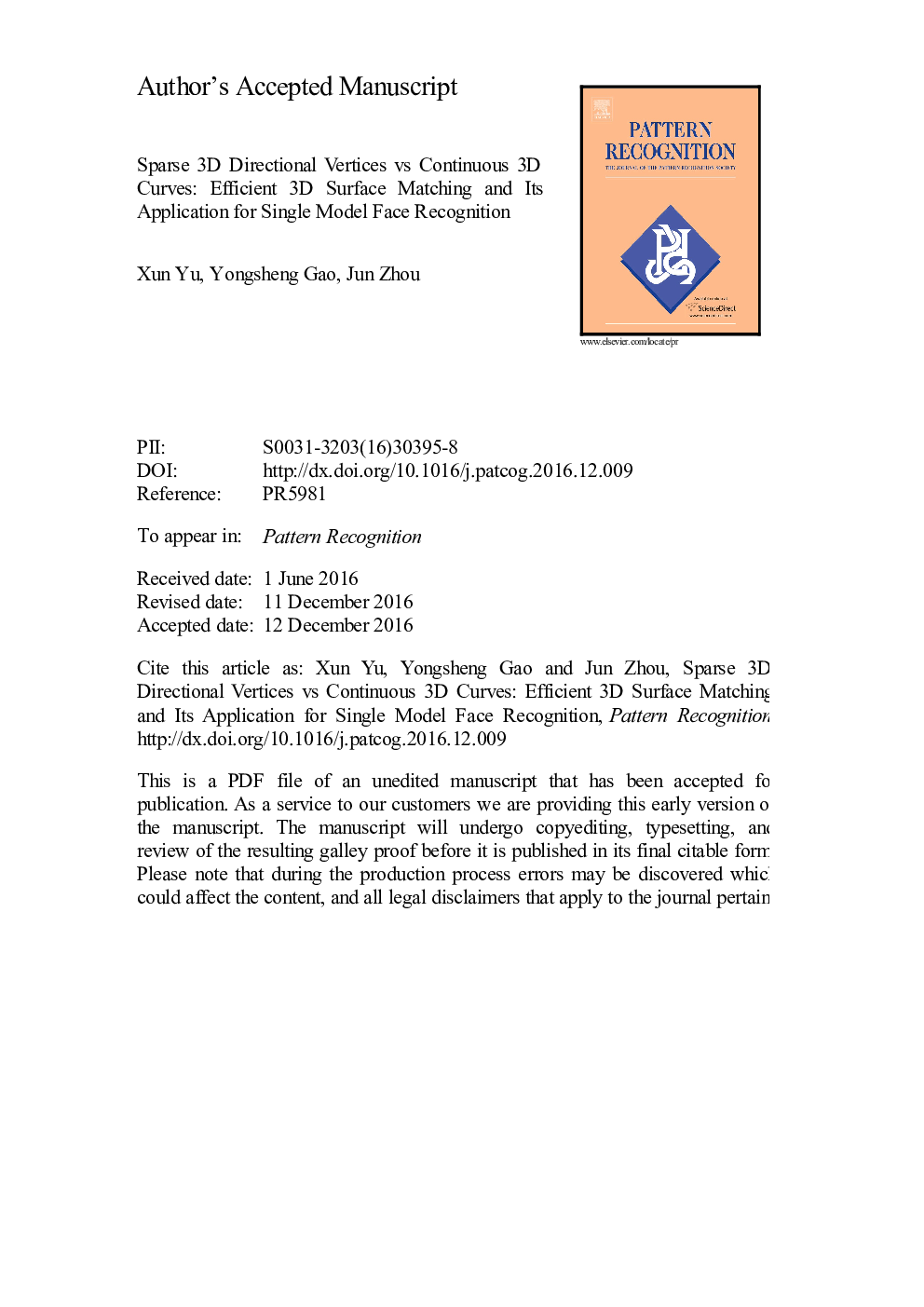| Article ID | Journal | Published Year | Pages | File Type |
|---|---|---|---|---|
| 4969643 | Pattern Recognition | 2017 | 39 Pages |
Abstract
Traditionally, point clouds and meshes are used to represent and match 3D shapes, which often cannot meet the computational speed and storage space requirements in many 3D data matching and retrieval applications. In this paper, we present a novel 3D directional vertices (3D2V) approach to efficiently represent and match 3D surfaces by much fewer sparsely distributed structured vertices that carry structural information transferred from their deleted neighbouring points. A 3D2V conversion and similarity measurement method is developed to compute the distance between two different 3D2Vs. The performance of the proposed method is evaluated on 3D face recognition using Face Recognition Grand Challenge v2.0 (FRGC v2.0) and GavabDB databases and compared with the curve-based benchmark method. The experimental results demonstrate that the proposed 3D2V method can significantly reduce the data storage requirement and computation time with a moderate increase of accuracy at the same time. It provides a new tool for developing fast 3D surface matching algorithms for large scale 3D data classification and retrieval.
Related Topics
Physical Sciences and Engineering
Computer Science
Computer Vision and Pattern Recognition
Authors
Xun Yu, Yongsheng Gao, Jun Zhou,
